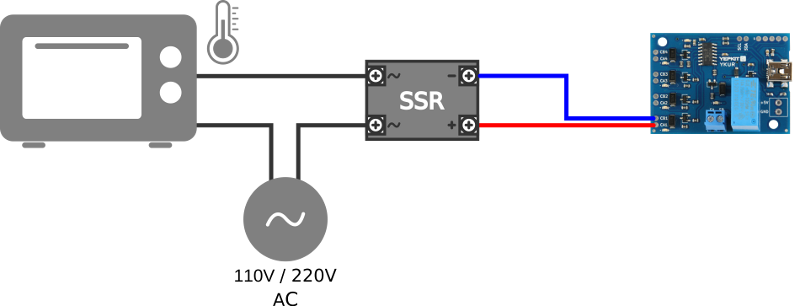Solid state relays are mainly used for switching high current AC loads specially in applications that require frequent switching. Being solid state brings significant advantages over mechanical relays. By not having moving parts they are highly resilient and fast switching.
For example, if you want to control a 110V/220V AC powered heating element with an algorithm like PID (for example in a oven to control accurately the temperate) using an SSR is a good approach, as illustrated in the figure below.

YKUR
boards make controlling SSR's easy trough the external relay driver ports.
Each YKUR can control up to four SSR's (one per external relay driver port),
in the same manner it controls
typical mechanical relays.
The figure below illustrates how to connect a SSR to one of the YKUR board external relay driver ports.

In a mechanical relay the polarity of the coil control connections does not matter, but in a SSR the polarity must be respected. The (+) control terminal of the SSR must be connected to the high-side pin of the YKUR external relay driver port, and the (-) control terminal of the SSR must be connected to the low-side pin of the YKUR external external relay driver port. The pins labeled CAx are high-side and pins labeled CBx are low-side. Use the figure above as reference for identifying the high-side and low-side pins of the external relay driver ports of YKUR board.





